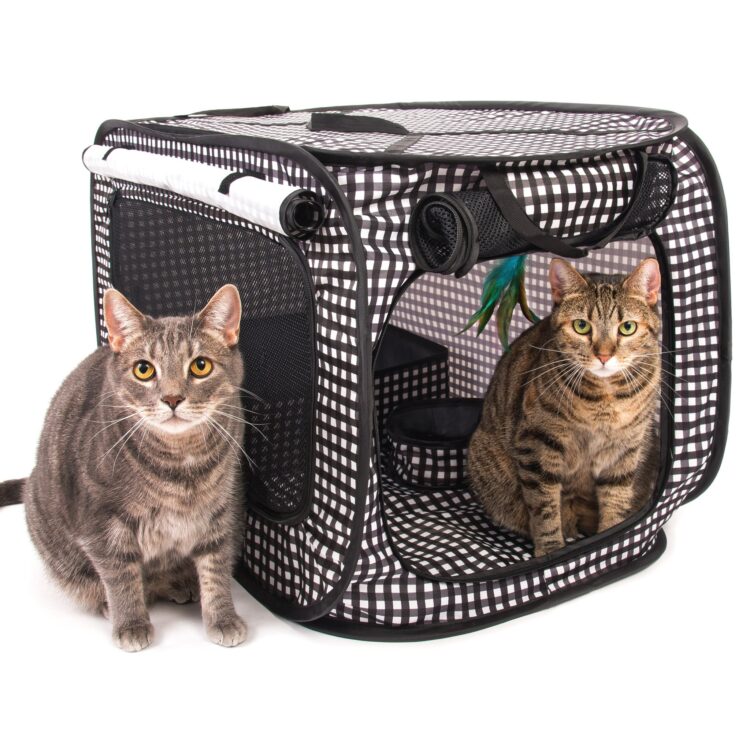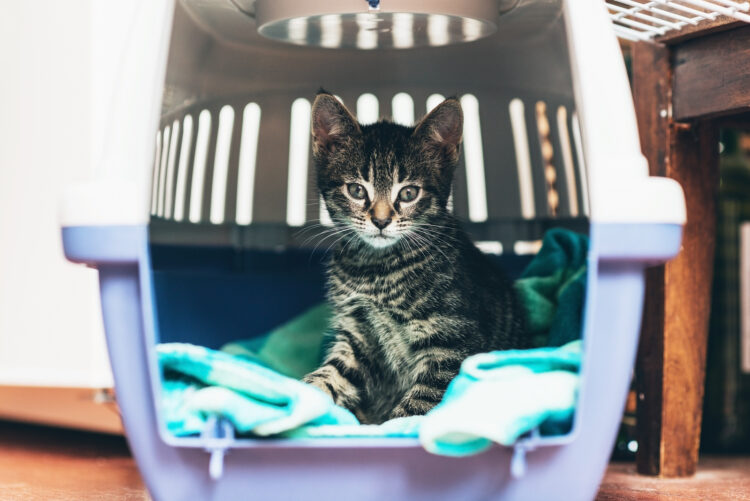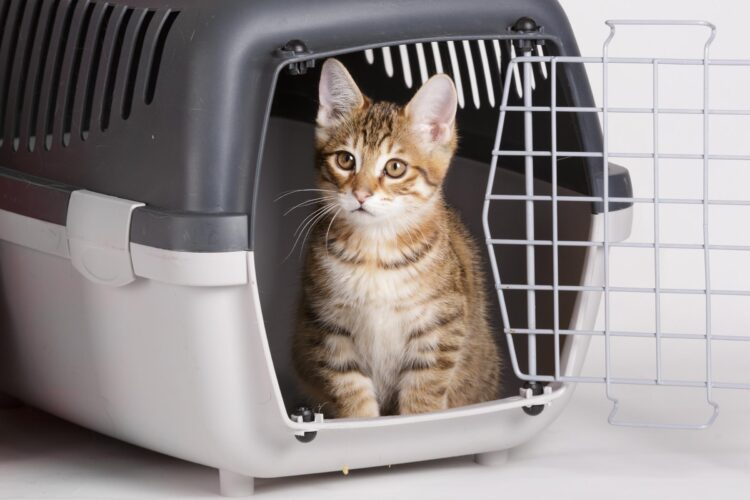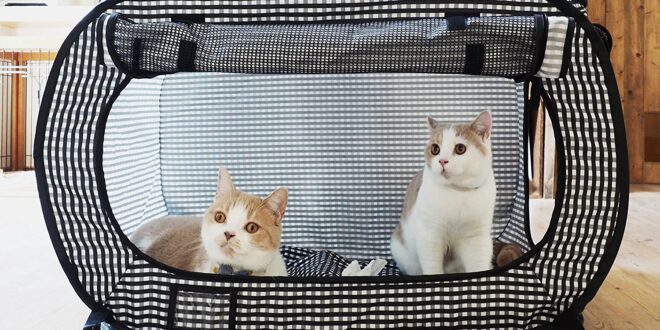No pet lovers want to leave their homes without their animal friends. To plan successful trips with your cat means facing up to the problems you may encounter.
No pets!

There are lodging accommodations, and transport businesses that put down a flat ban on pets. Amtrak for example only allows pets on a handful of test routes (and then the rail company only allows certain pets). There are a few airlines that won’t countenance carrying your pet.
OK but with restrictions
The majority of airlines that do allow pets, but some airlines insist pets travel in cargo.
Breed limitations
The majority of airlines raise concerns if your pet is brachycephalic with a broad, short skull. They fear snub-nosed animals are bound to have breathing problems which could be worsened at altitude.
Weather problems

In general, airlines don’t allow animals to fly if temperatures may fall below 45o F or rise to over 85o F. When you need to travel in the winter or the summer, this can affect the time of day you have to fly.
If the weather may change, there’s a chance your pet will not be allowed on a flight. This could create last-minute havoc with travel plans.
Sedation no longer
The days of tranquilizing pets in transit by air are long gone. No airline will accept a sedated pet.
Improper carrier

Whatever carrier you choose to use at home, when you travel by air the airline will insist on an extra-sturdy travel kennel. It has to meet both the International Air Transport Association (IATA) as well as the USDA specifications. There is a big danger in assuming your everyday carrier is going to suffice. If it doesn’t you and your pet’s travel itinerary is likely to unravel before you manage to get anywhere.
Not all journeys appear to need a cat travel carrier that has its litter box. But traveling with cats can be a big challenge so more often than not they turn out actually to be essential.
Typically cats are far from comfortable outside their normal surroundings. They may well have a tendency towards excessive nervousness or even anger when they are put into their travel carrier or crate.
This response can easily manifest itself not just in a lot of angry meowing or hostile behavior. It can also lead to a loosening of the bowels.
Successful traveling
According to ipetcompanion, a way of successfully deterring this type of unwanted and unfortunate behavior is to make sure you prepare well in advance. Training kittens to stay calm in their carriers is much easier than trying to train a full-grown cat.
When you travel with a cat that is unacquainted with any sort of carrier, try turning the carrier on its side and then try to encourage your moggy to enter even when you are not even going anywhere. Then you should reward them with a treat and a lot of attention when they successfully go into the carrier with no fuss. It’s a way of reinforcing the message that the cat has done well.
To help, try putting some catnip or a catnip toy into whatever carrier you are using. This will aid the idea that the carrier can be associated with pleasant feelings. Also, place something of your own in there too so they have a scent of you near them as reassurance. You will undoubtedly need to practice a few times but it should pay off in the end when it comes to the day of travel.
It is highly recommended that you buy a travel crate with a litter box or at least get a pet pad for the carrier. Nervous cats are prone to urinate or even defecate. Remember it will not be easy dealing with unpleasant odors when you have other things on your mind.
Extra privacy
When you leave on your trip put the carrier’s privacy flaps down. This will help make your cat feel secure.
In a worst-case scenario like you missing a connecting flight and finding yourself and your cat stuck in the terminal for hours on end when you just know your cat will need to go to the bathroom or will do before you arrive at your destination. This is the sort of time when you need a carrier with a litter box.
If you are not able to locate it then do the next best thing. Take along a portable litter tray, along with many small bags of litter in zip-lock bags. Then at least you can take your pet into a restroom to set up the portable solution.
Whether you have a travel crate with the litter box or a makeshift solution, get rid of the kitty’s litter in the trash and wash out the tray. Be considerate and resist rinsing the litter down the sink. If you have a litter tray that folds, the whole set up should take up almost no room and can, therefore, be placed inside the carrier.
A suggestion is the SturdiBag pet carriers. These are airline compliant. But if you’re only planning to go a short distance down the road or plan to stop regularly, your cat may be able to wait so it can use its litter tray when you are stationary or it’s a more comfortable environment.
Even if you are unlikely to require a cat travel crate with a litter box, they can be useful things to have in the case. When a cat is prone to feeling nervous or anxious, then having a cat carrier with a litter tray, even if it’s just for a short trip, maybe the best idea.
It’s also recommended that you pack puppy training pads along with plenty of absorbent towels in case you need to clean up any accidents.
Cat travel crates with litter boxes are readily available but the two elements can also be bought separately. Just ensure that you plan so that you will have everything ready for your trip.
 Hi Boox Popular Magazine 2024
Hi Boox Popular Magazine 2024



